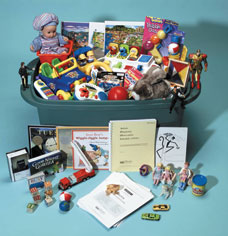2.3 How is diagnosis carried out?
Diagnostic practice depends on the professionals involved, how they work, geographical area and country. In the UK, a school educational psychologist, GP or paediatrician may be involved in the early stages; a clinical psychologist or psychiatrist may make the diagnosis alone, but diagnosis will typically involve different specialists working as a team. An individual’s journey to diagnosis can involve problems, delays, distress and conflicting information. In the UK, most local authorities have defined procedures or ‘pathways’, that specify the process by which children suspected of having a special educational need are referred for specialist assessment and/or diagnostic evaluation. The
The process of assessing a child or adult usually involves a
Activity _unit4.2.2 Activity 3 A diagnostic tool in action
The following two clips feature expert Dr Amitta Shah using the DISCO in a diagnostic session with a young boy and his parents. Attending the session and providing commentary is clinical psychologist, Dr Laverne Antrobus. The interview itself focuses on the parents’ recall of their child’s early behaviour and their current concerns. As you watch the clips, note three other sources of evidence that Dr Shah says she has used in making the diagnosis.
Transcript
[MUSIC PLAYING]
Transcript
Discussion
Dr Shah mentions reports from the paediatrician, DVDs and also meeting the child himself, which has enabled her to observe him directly. This integration of different evidence sources is typical of diagnostic tools for autism and is a key feature of the DISCO.

